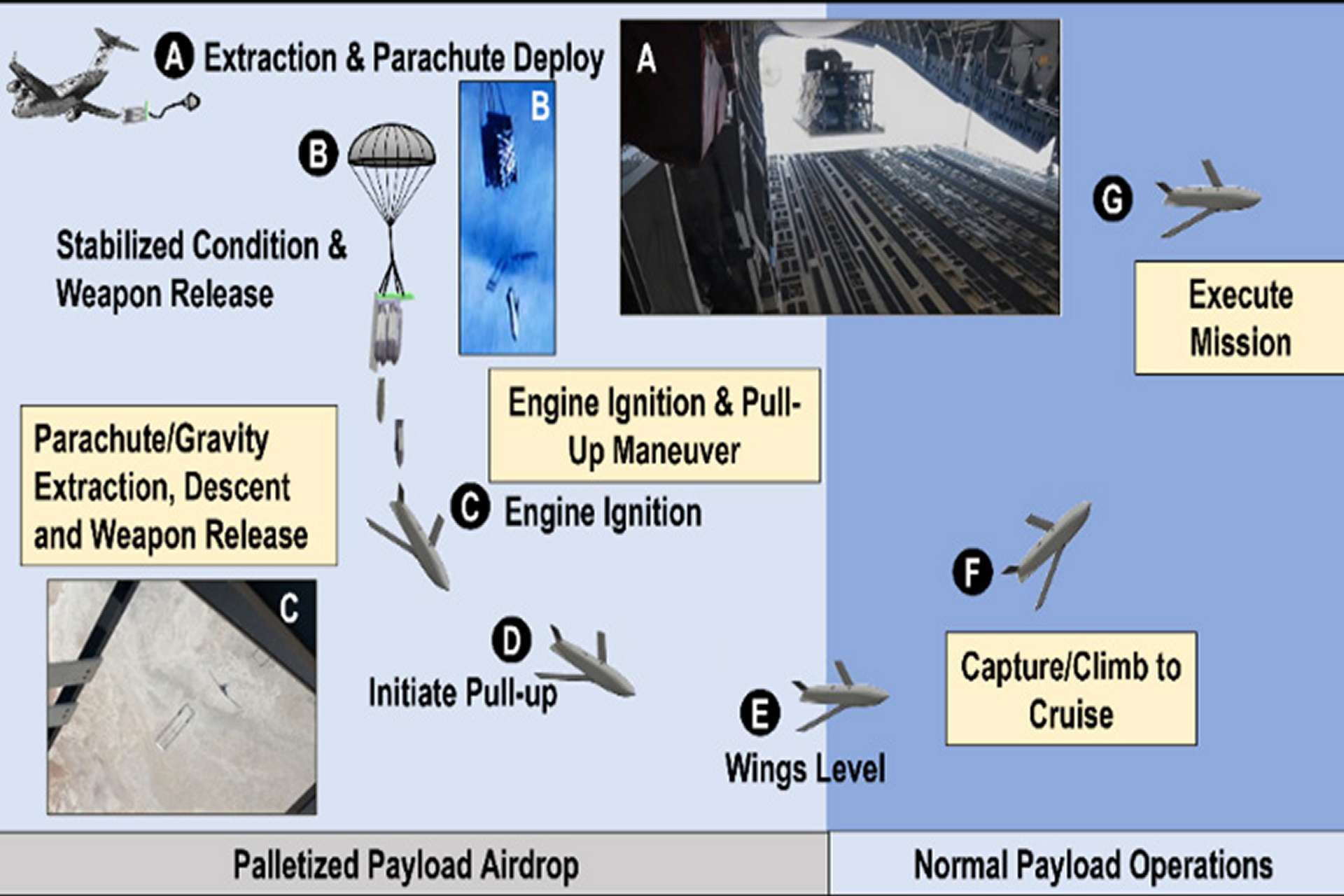Breaking News
Leidos Successfully Tests Launch of Black Arrow Low-Cost Small Cruise Missile from AC-130J Ghostrider Gunship.
On October 3, 2024, Leidos, an American company specializing in defense and advanced technology, unveiled the "Black Arrow," a small cruise missile designed to meet the growing needs for flexibility and versatility on the battlefield. Designed for both kinetic and non-kinetic missions, this new system stands out for its low cost and adaptability, offering a wide range of military applications.

Leidos Black Arrow Low-Cost Small Cruise Missile (Picture source: Leidos)
Launched in 2021, this program builds on Leidos' experience with small munitions such as the GBU-69, used on AC-130 aircraft, as well as the X-61 Gremlins program developed in partnership with the Defense Advanced Projects Agency (DARPA). This project allowed Leidos to test an air vehicle capable of being launched from a C-130 and then recovered mid-flight, demonstrating its expertise in integrating innovative technologies on existing platforms.
In 2022, Leidos signed a Cooperative Research and Development Agreement (CRADA) with the Special Operations Command (SOCOM) and the U.S. Air Force Special Operations Command (AFSOC) to advance the development of the Small Cruise Missile (SCM). The SCM is designed to be an economical, modular platform suited to the missions of various branches of the armed forces, with an architecture that facilitates future updates and responds to both kinetic and non-kinetic objectives. According to Leidos, this flexibility allows for a variety of launch options, including ramps, pallets, or conventional systems, depending on tactical needs.
As part of its development, the Black Arrow recently completed a series of separation and captive-carry tests aboard an AC-130J Ghostrider, a support aircraft renowned for its firepower. These tests confirmed the weapon’s ability to safely detach from its launcher, as well as the reliability of its trajectory, flight software, navigation, and safety systems.
These favorable results pave the way for guided flight tests scheduled for this fall, which will be critical for validating the Black Arrow's flight behavior under real conditions and finalizing necessary technical adjustments before its deployment.
The competitive landscape also plays a role in the development of this missile, as other companies, such as Anduril Industries, are also working on low-cost, large-scale cruise missile solutions. This dynamic underscores the importance for Leidos to offer innovative, competitive solutions by integrating components from diverse sources to maintain its leading position in the defense industry.
The growing popularity of munitions launched from transport aircraft, such as the AGM-158 JASSM and the Rapid Dragon system, also highlights the strategic interest in this launch type, an approach that could transform the projection capabilities of the U.S. Air Force. Indeed, projection capabilities are radically transformed by the introduction of small cruise missiles like the Black Arrow. Traditionally, missile strikes relied on specialized fighter aircraft, limited in number and range. However, with systems like the Black Arrow, transport aircraft can now serve as launch platforms using ramps or pallets. This innovation allows transport aircraft, such as the C-130 and C-17, to be converted into offensive platforms, significantly increasing the number of military vehicles capable of carrying out precision strikes.
Adding this capability provides valuable tactical flexibility. Unlike fighter jets, often too visible in heavily monitored environments, transport aircraft can discreetly deploy missiles in high-tension areas. This gives military forces greater autonomy to strike remote targets quickly, even in the absence of forward bases. This flexibility is particularly strategic for close support missions or operations where surprise and speed are essential.
Finally, this approach creates uncertainty for the adversary, who must now consider the possibility that transport aircraft may also be equipped for missile strikes. This new dynamic complicates enemy defense strategies, as it forces opposing forces to rethink their targeting priorities, knowing that an apparently harmless transport aircraft can also carry formidable strike capabilities. Consequently, small cruise missiles like the Black Arrow not only redefine military logistics but also the strategic projection of forces in contested environments, while optimizing engagement costs and flexibility.
However, some analysts believe that, in the event of a major conflict, transport aircraft could be primarily mobilized for logistics missions, limiting their use for missile strikes.
Mark Miller, Leidos’ Vice President of Missile and Aviation Solutions, highlighted that the rapid development of the Black Arrow benefited from the company’s experience with previous projects, such as the GBU-69 and the DARPA X-61 Gremlins program. These projects illustrate Leidos’ commitment to innovative initiatives, with a particular focus on agility and operational performance.
With the Black Arrow, Leidos offers a small, versatile cruise missile designed to meet the modern requirements of the armed forces. By focusing on technological innovation and an open architecture, Leidos continues to enhance military capabilities by providing rapidly deployable solutions suited to various missions. If guided flight tests proceed as planned, the Black Arrow could become a strategic tool of choice, providing the military with enhanced operational flexibility and optimal efficiency in the coming years.

Rapid Dragon System (Picture source: AFLR)


























